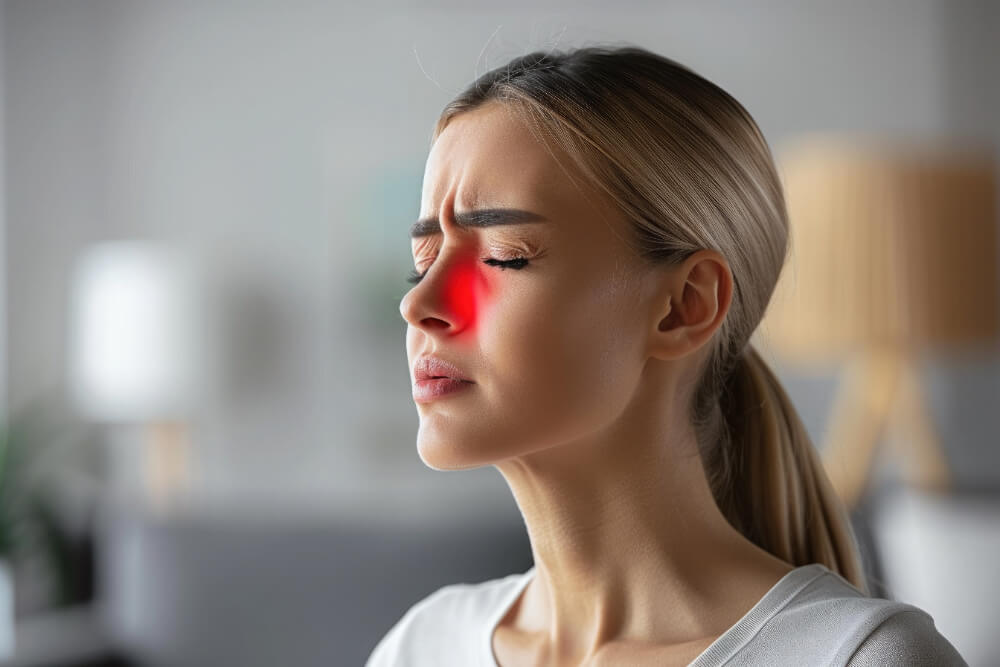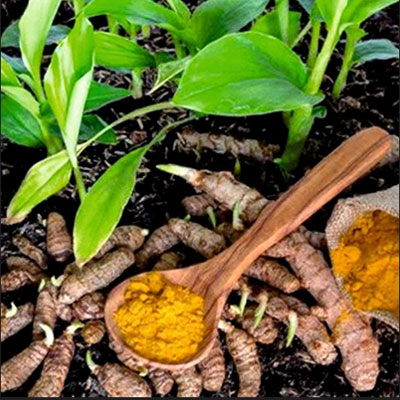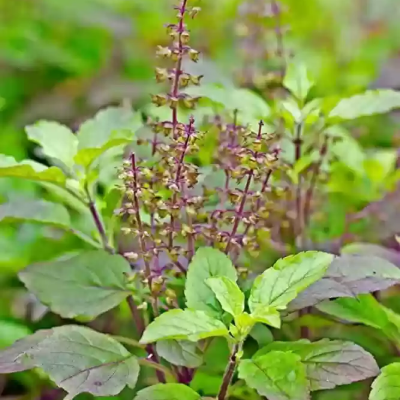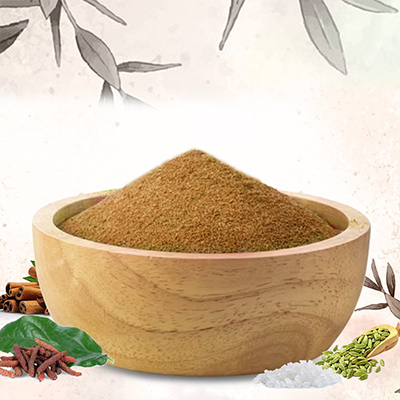Sinusitis refers to the inflammation or swelling of the tissues lining the sinuses, which are hollow air-filled spaces in the skull. Normally, sinuses are filled with air, but when they become blocked and filled with fluid, germs like bacteria, viruses, or fungi can grow, leading to infection.
Causes of Sinusitis
Infections
- Viral infections like the common cold.
- Bacterial infections.
- Fungal infections (rare, seen in people with weak immunity).
Allergies
- Hay fever or allergic rhinitis can trigger inflammation and block sinus drainage.
Structural Issues
- Deviated nasal septum (crooked partition in the nose).
- Nasal polyps (growths in the nasal passage).
Environmental Factors
- Pollutants, smoke, or dry air irritate the sinuses.
Underlying Conditions
- Asthma.
- Immune system disorders
Signs & Symptoms of Sinusitis
Nasal Symptoms
- Blocked or stuffy nose.
- Thick nasal discharge (yellow or green).
Facial Symptoms
- Pain or pressure around the eyes, forehead, or cheeks.
- Pain worsens when bending forward.
Other Symptoms
- Headache.
- Reduced or lost sense of smell.
- Fever.
- Sore throat and cough (postnasal drip).
- Bad breath (halitosis).
Types of Sinusitis
- Acute Sinusitis: Lasts up to 4 weeks, often due to viral infections.
- Sub acute Sinusitis: Symptoms last 4-12 weeks.
- Chronic Sinusitis: Symptoms persist for more than 12 weeks.
- Recurrent Sinusitis: Several episodes in a year.
Complications of Sinusitis
Although rare, untreated or severe sinusitis can lead to:
- Orbital (Eye) Problems: Swelling or infection of the tissues around the eye.
- Brain Abscess: Infection spreads to the brain.
- Meningitis: Inflammation of the brain’s protective covering.
- Osteomyelitis: Bone infection, usually in the skull.
- Chronic Sinusitis: Permanent changes in sinus tissues.
Diagnosis of Sinusitis
Clinical Examination
- History of symptoms.
- Physical examination of the nose and throat.
Imaging
- X-rays or CT scan to check for blocked sinuses.
Nasal Endoscopy
- A camera inserted into the nose to observe the sinuses.
Allergy Testing
Identifies if allergies are triggering sinusitis.
Nasal Culture
Identifies the type of infection (bacterial, viral, fungal).
Ayurvedic Perspective on Sinusitis (Dushta Pratishyaya)
In Ayurveda, sinusitis can be correlated with Dushta Pratishyaya or Peenas, caused by an imbalance in the three doshas:
- Vata: Causes dryness and blockages
- Pitta: Leads to inflammation and burning sensations.
- Kapha: Produces mucus, congestion, and heaviness.
Ayurvedic Treatment for Sinusitis
Nasya Karma
- Medicated oils (like Anu Taila) are administered through the nose to clear sinus passages.
Dhoomapana
- Inhalation of medicated smoke to reduce Kapha.
Vamana (Therapeutic Emesis)
- Removes toxins causing mucus build-up.
Shirodhara
- Pouring medicated oil on the forehead for relaxation and sinus relief.
Lifestyle and Diet (Ahara and Vihara)
- Avoid cold, oily, and heavy foods.
- Include warm, light, and easily digestible meals
- Stay hydrated with warm water or herbal teas.
- Avoid exposure to cold air or sudden temperature changes.
Home Remedies
- Steam inhalation with eucalyptus or ajwain seeds.
- Gargling with warm saltwater.
- Applying warm compresses to relieve sinus pain.
Yoga and Pranayama
- Jala Neti: Nasal cleansing with saline water.
- Kapalabhati: Clears nasal passages and strengthens the respiratory system.
- Anulom Vilom: Balances doshas and improves breathing.
Herbal Remedies
Haridra (Turmeric)
Reduces inflammation and acts as an antibacterial.
Tulsi (Holy Basil)
Boosts immunity and clears mucus.
Pippali (Long Pepper)
Improves sinus drainage.
Sitopaladi Churna
Relieves cough and nasal congestion.
Prevention Tips
- Avoid exposure to allergens or pollutants.
- Keep your home humidified but not overly moist.
- Follow a Kapha-balancing diet during winter and spring.
- Practice nasal hygiene with saline rinses regularly.







